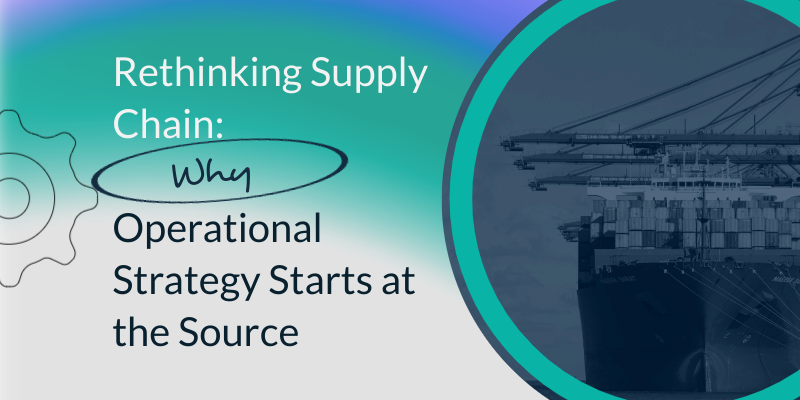Beyond the Break: Strategies for Combating Burnout and Revitalizing Your Workforce
When you’re in an environment where everyone is overworked, it can be tough to realize what’s happening at first — you might be so overwhelmed by your own exhaustion or too stressed by the volume of work to take a step back and take note. Yet some statistics suggest that up to 82% of employees suffer from burnout, with huge implications for a company’s productivity and sustainability.
This can be a tougher problem to solve than you might think. Sometimes, an overworked team can be a problem you can overcome with a rest period — but if you have a chronically overworked workforce or processes that are failing, a quick breather will only provide a temporary band-aid. Here’s what you should be doing for a more long-term solution.
The effects of burnout go beyond just individual employees, as it can also have a significant impact on the overall productivity and sustainability of a company. When employees are burnt out, their work quality and efficiency may decrease, leading to missed deadlines and decreased output. This can ultimately affect the bottom line and profitability of a business.
Moreover, burnout can also impact employee retention rates. When employees are constantly overworked and stressed, they may begin to look for opportunities elsewhere, leading to higher turnover rates. This can be costly for a company, as it not only involves the cost of hiring and training new employees but also the loss of valuable knowledge and experience.
To prevent burnout in the workplace, it is important for employers to prioritize their employees’ well-being and mental health. This can include providing resources for managing stress, promoting work-life balance, and encouraging open communication about workload and expectations. Additionally, implementing policies that prioritize employee well-being, such as flexible work schedules or mental health days, can also help prevent burnout.
Creating a healthy work culture is also crucial in preventing burnout. This includes fostering a supportive and inclusive environment, recognizing and acknowledging employee contributions, and promoting a healthy work-life balance. When employees feel valued and supported, they are more likely to be engaged and motivated in their work.
Moreover, employers should also consider the workload distribution among employees. It is important to ensure that each employee has a manageable workload and that tasks are assigned based on individual strengths and capabilities. This can help prevent burnout and increase overall productivity.
Burnout is a prevalent issue in many workplaces and can have significant negative effects. Employers should prioritize their employees’ well-being and mental health to prevent burnout and create a positive work culture. By implementing policies and practices that promote work-life balance and support the individual needs of employees, companies can not only improve employee satisfaction and retention but also increase productivity and profitability in the long run. So, it is important for employers to regularly assess their employees’ well-being and take necessary steps to prevent burnout before it becomes a major issue. This can include encouraging healthy habits such as regular breaks, promoting a positive work environment, and offering resources for managing stress and workload. By taking proactive measures, employers can create a healthier and more sustainable workplace for their employees. Overall, prioritizing employee well-being is not just beneficial for the individuals but also for the success of the company as a whole. So, it is important to address burnout and take steps to prevent it in order to foster a positive and productive work environment.
Why do employees get overworked?
No two organizations are identical; each has its unique characteristics and culture. However, certain common factors frequently emerge to shed light on the issue of overworked employees. These factors can include unrealistic workloads, poor time management practices, and a lack of clear communication channels within the organization. Addressing these underlying issues is crucial to fostering a healthy work environment and ensuring the well-being of employees.
These are:
- Systems that have been outgrown
- Inappropriate systems
- Cumbersome processes
- People in the wrong roles
- Ineffective management
Let’s look at them one by one — along with some potential solutions.
Outgrown Systems: As many companies start small, they often operate with processes akin to a “minimal viable product” initially. This means having only the essential structures in place to allow for agility and facilitate growth. During the initial phases, it is typical for a business to operate without distinct departments. Instead, they may choose to have a single individual supervising operations or merge multiple departments to enhance efficiency. However, as the company expands, these systems can become inadequate and hinder productivity.
However, as a company expands and revenue grows, it becomes crucial for the organization to adapt and refine its processes to align with the increased scale and complexity of its operations. This evolution is a natural progression that reflects the company’s development and the need for more defined structures to support its continued growth.
If sales have increased fivefold but there’s still only one person to process all those orders, that person will end up overworked. When this happens, it may be time to think of introducing different software to automate their job or hiring someone else to help out.
This comes down to looking at the daily tasks your overworked employees are doing and figuring out how to make them easier and less time-consuming. It’s all about systems, which leads nicely to our next point.
Inappropriate systems
In some cases, companies may have implemented processes that are not suitable for their specific industry or business structure. For example, a retail chain may be using a system designed for large corporations while still functioning as a small business. This mismatch of systems can lead to inefficiency and. As a result, employees may end up spending more time on tasks that could be easily automated or streamlined with the right tools and processes in place.
To avoid this issue, companies should regularly review their systems and processes to ensure they are aligned with their current needs and goals. This includes evaluating whether certain tasks can be outsourced or automated, as well as identifying any redundancies or inefficiencies in the current system.
Simpler is usually better and more efficient, yet many businesses have overly complicated processes. Why make someone manually enter data about business transactions if you could automate the whole thing by connecting accounting software with all your accounts, for instance?
It can be tough to spot bottlenecks when you’re immersed in your processes on a day-to-day basis, but process mapping can help you piece this together and identify where exactly you’re going wrong — and help you find a more suitable system. You could also consider working with a consultant to identify weaknesses.
Cumbersome processes
Similarly, many companies end up with unnecessary steps and bureaucracy in their processes. This can be a result of outdated methods being used, such as printing and scanning documents instead of utilizing digital forms and e-signatures. Cumbersome processes can lead to frustration and burnout for employees who may feel like their time is being wasted on unnecessary tasks.
Cumbersome or overly complicated processes can also contribute significantly to employee burnout. This issue commonly arises when companies fail to revise their procedures for an extended period, persisting with outdated methods that no longer align with current needs. Inefficient and time-consuming processes not only breed frustration but can also result in a noticeable decline in productivity levels among employees, impacting overall team performance and morale.
Maybe your organizational structure is too centralized and requires employees to receive “approval” for every little decision they make. This can cause burnout from lower-level employees and managers alike, as they spend too much time seeking approval (or doing the approving) rather than performing their core job role.
Wrong people for roles
Your employees might be hard-working and admirable individuals, but if they’re assigned to roles that don’t align with their strengths and passions, it could lead to feelings of dissatisfaction and decreased productivity. It’s crucial to take a thorough assessment of your team members and identify their unique strengths and talents. Are their current roles optimized to leverage these strengths effectively? Conducting this evaluation can help enhance employee satisfaction and overall team performance in the long run.
Naturally, it’s important to actively engage them in the process. Consider setting up individual one-on-one meetings with each team member to delve into whether they believe their current role effectively utilizes their strengths and skills. Additionally, inquire if there are any other tasks or responsibilities they might be interested in exploring within the team.
Ineffective management
But it’s not always the individuals fulfilling the roles who are at fault. Despite having an exceptional team proficient in their roles, establishing positive relationships with their managers is crucial for overall success. Effective communication, mutual understanding, and supportive leadership play key roles in fostering a productive work environment.
Maybe you have a micromanager on your hands who’s stopping your team from reaching their full potential, or perhaps you have a manager who’s not involved enough and leaves the brunt of all the work to employees, leaving them stressed and overworked.
This isn’t about pointing fingers but spotting which processes need to change.
The devil’s in the processes
You might have observed that the aforementioned factors all converge on a common issue: Processes that are not functioning optimally, which could be attributed to management approaches or inefficient technology implementation. This can lead to operational inefficiencies and hinder overall productivity within the organization. Therefore, it’s important to regularly evaluate and update processes, as well as foster a supportive work culture that promotes employee satisfaction and productivity.
By addressing these underlying issues and taking proactive measures, businesses can prevent burnout among their employees and ensure long-term success. Remember, happy and satisfied employees are the backbone of any successful organization. So take the time to invest in your team and continually work towards improving processes, communication, and management within your company. Only then can you create a thriving and sustainable work environment for your employees. So let’s strive to constantly evolve and adapt in our ever-changing business landscape, because ultimately, it’s the people that make a company thrive. Keep investing in your team and watch them soar!
The Importance of Reflecting on Processes and Making Changes
In conclusion, it is essential for companies to regularly review their processes and make necessary changes in order to increase efficiency, reduce burnout, and foster a positive work culture. This involves identifying areas for improvement, such as automating or outsourcing tasks, eliminating unnecessary steps and bureaucracy, properly aligning team members with their strengths and roles, and promoting effective communication and supportive management.
By continuously evaluating processes and making adjustments as needed, companies can prevent burnout among employees and create a more productive, happy, and sustainable work environment. So take the time to reflect on your processes and make necessary changes – it will ultimately benefit both your team and your business in the long run. And remember, it’s an ongoing process – constantly strive for improvement and adapt to the ever-changing needs of your team and organization.
We consider all these aspects to help you design more effective processes for your business. To find out more, book a consultation today.







